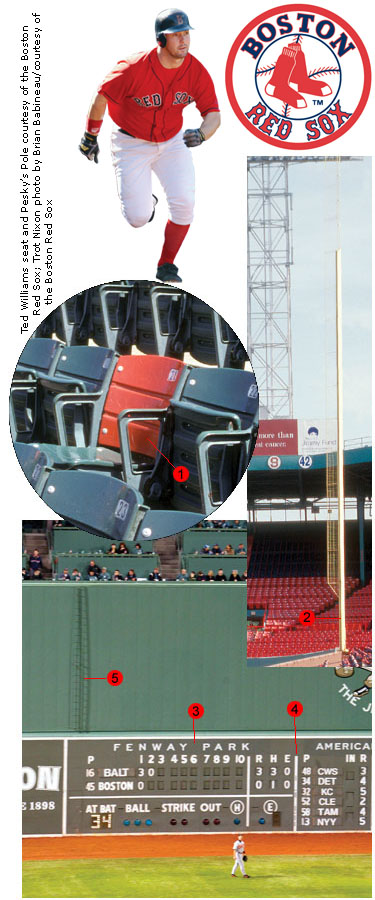An inside look at pro baseball's oldest ballpark
by Christine Celli

Home to the Boston Red Sox since 1912, Fenway Park lays claim to being the oldest ballpark in Major League Baseball. Visitors to the stadium will immediately spot the famed Green Monster, the retired numbers of Red Sox greats including Ted Williams and Carl Yastrzemski and the banners that mark the team’s achievements over the years. But they may miss some of the features that often go unnoticed yet make Fenway the shrine that it is to baseball fans. These include:
- Teddy Ballgame’s Seat: Seat 21 in row 37 of section 42 of the bleachers marks
the spot where, in 1946, Williams knocked what is believed to be the longest home
run in the park’s history (502 feet), landing in and ruining the straw hat
of the patron sitting there.
- Pesky’s Pole: Just one of many examples of Fenway’s quirks is the right
field foul pole, which is placed closer than in most big-league stadiums at 302
feet. Since the field juts outward beyond the pole, fly balls that in other parks
would be foul balls end up as home runs. Johnny Pesky, not exactly a power hitter
when he played for the Sox from 1942–52, wrapped a few of his six career Fenway
homers around that pole, which was christened in his honor by a teammate.
- Manually Operated Scoreboard: The only one left in the Majors, the game’s
score is kept by two operators who sit inside the Green Monster and monitor the
game by radio.
- Morse Code: Two of the scoreboard’s vertical lines contain the initials of
longtime owners Thomas and Jean Yawkey, spelled out in Morse code.
- The Monster’s Ladder: If you squint you’ll see it—a ladder 13 feet up the wall in left center. In the past it was used by groundkeepers to fetch balls hit into the net over the giant green wall. But now with the four new rows of seats on top of the Green Monster, its function is obsolete.